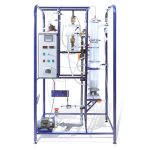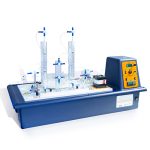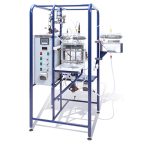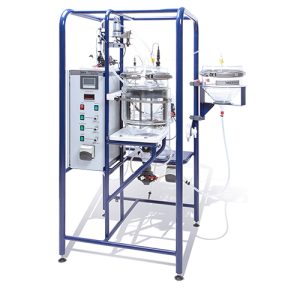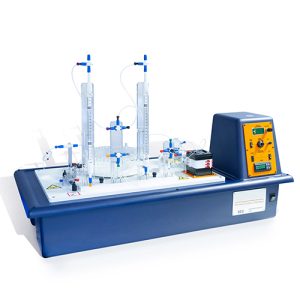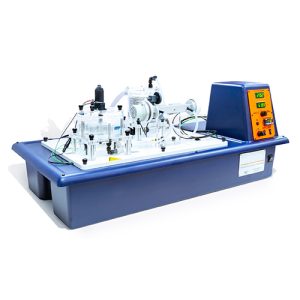BE3 Anaerobic Column Reactor Teaching Equipment Biochemical Engineering
BE3 Anaerobic Column Reactor Teaching Equipment Biochemical Engineering
- Description
- Inquiry
Description
BE3 Anaerobic Column Reactor Teaching Equipment Biochemical Engineering
DESCRIPTION
The Anaerobic Column Reactor BE3 features a tall, slender, cylindrical glass column in two sections, each section with a heating jacket. At the top of the column, a third unheated section collects the gas and provides an efffuent overffow. Between the two heated sections is a manifold, which provides ports for instrumentation, sampling and dosing. The feed into the reactor is provided by a variable-speed peristaltic pump.
The temperature of the column contents can be controlled by circulating warm water through the jackets of the lower two sections. The water is heated in a heating tank, using an electric heater and distributed by a recirculation pump using PID control. Typically the
reactor temperature is set to 35°C to suit the anaerobic bacteria in the feedstock.
The column contents can be recirculated from the top section to the bottom section using a variable speed pump. The recirculation can also be used to ffuidise a bed of media (eg pumice) used to support the growth of biomass. Alternatively the column can be operated as an expanded granular sludge bed reactor (EGSB) with no media fflling.
A novel feature of the new Anaerobic Reactors is the gas collection system. This enables the rate of gas emission to be accurately measured over long periods of time. This occurs even when very low quantities of gas are produced, while retaining low back pressure in the system so as not to inhibit the release of the gases. It operates by collecting a known
volume of gas over water. When the collection tank is full the gas is automatically discharged and the water replaced. The PLC counts the number of cycles to measure the total volume of gas and measures the time between discharges to calculate the ffow rate.
The reactor is supplied complete with a pH dosing system. This comprises two peristaltic pumps under control of the PLC, used to add a base solution or an acid solution to the reactor as appropriate. The user can deffne the range of pH values to be maintained.
Storage positions are provided for standard ffve-litre chemical jars, enabling the dosing solutions to be prepared in advance and left in place throughout the process, minimising the need to handle potentially harmful chemicals.
As well as the gas collection rate and volume, further instrumentation measures the reactor temperature, pH, water temperature and the recirculation ffow.
This data can all be recorded on a PC using the data logger.


